Tibrina Hobson/WireImage
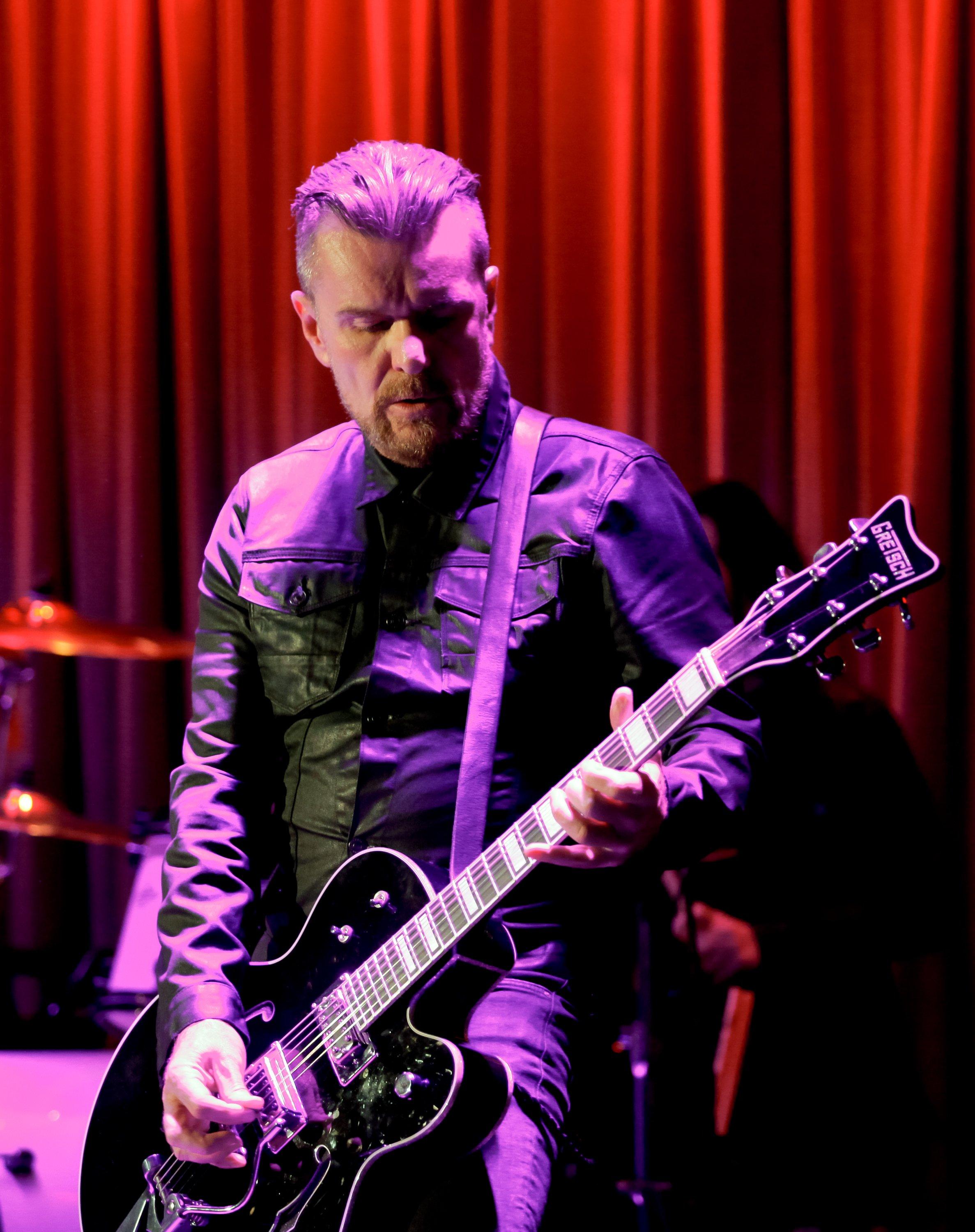
interview
Billy Duffy Talks 'Hidden City,' Guns N' Roses Tour, Streaming
The Cult guitarist/songwriter also discusses how he finds new energy in new music and his thoughts on frontman Ian Astbury
GRAMMY.com caught up with Billy Duffy to hear about how The Cult is navigating the modern world of digital streaming, and how putting out new music at this stage in his career is like receiving a “blood transfusion.”
<iframe width="620" height="349" src="https://www.youtube.com/embed/ERYVZiEOicQ" frameborder="0" allow="autoplay; encrypted-media" allowfullscreen></iframe>
The Cult is currently on the road for a stint of US dates after supporting Guns N’ Roses on their 2016 Not in This Lifetime Tour.
You just got off the road with Guns N’ Roses. How was that tour?
Rock and roll on an industrial level! We’ve done big gigs before, but it was interesting to go back and be a part of that dynamic. It’s a big stage - lots of running around. Mentally, physically, and spiritually you have to get ready for it.
At this point in your career, do you learn anything from watching a big arena band like Guns N’ Roses perform?
Guns N’ Roses rehearsed very hard. That’s one thing I learned: they rehearse a lot. You almost second nature the actual playing so you can work out the performance and get the chemistry on stage. That stuff’s important.
Hidden City is your 10th studio album. What was the inspiration behind it?
I don’t want to paraphrase Ian [Astbury] in terms of lyrical inspiration, but for me it’s the same for every album. I get an itch, and I write a load of music. I need to scratch the itch and get that music out, so I get together with Ian and an album pops out. Fortunately, I’ve got a partner where we manage to get in the same space, come together and make records.
My personal challenge is to make music that doesn’t suck, and I think we achieved that with this record. Our albums are basically the same two guys that wrote them for 30 years, but they are all diverse and it charts a journey and an exploration. We could have made the same album 10 times - we might be guilty of many things, but we’re not guilty of that.
Is it still as exciting at this point in your career to be able to put out new music?
There are bands that go out on tour and just play the hits and never make new music, and then there are bands that make new music. I think that gives you a blood transfusion. It’s important to go through that process.
How has the process of how you and Ian work together to create songs evolved over the years?
Back in the old '80s, you could kind of knock music together. The band is your home. If you’re not on tour, you’re in rehearsals or making a record and material comes up and germinates quickly. You do it in sound checks. You play it live. That’s all dead now because of cell phones and the Internet. Nobody plays new songs live before they have been recorded because they have no value. Plus, the way recording has changed. People can record at home and do their own thing. You don’t have to get the band together, although I find that is healthy. The other thing, to be totally, brutally honest, is when you get older and you’ve been in a band and you’ve made some money, you don’t hang out with each other as much. I don’t care what anybody tells you, the last thing you want to do when you’ve just finished a tour is see the other guys in the band. So it takes time to get together.
Having said all that, every three years Ian and I have ideas and we put them together. I will confess I don’t think I’ve had one new riff idea since we did Hidden City though. It’s a weird thing for me, but it comes when it’s ready.
When it starts happening, I make sure I’ve got something to record it on and then I start the process. I’m not one of these guys that have a home studio; I’ve never been into that technical side of it. I’m more of an experiential guitar player trying to express how I’m feeling through the music and melodies.
You had Chris Chaney play bass on this album. What did he bring to the project?
He just intuitively and seamlessly knew what we wanted to hear. There was barely a moment where we were like, “Oh don’t play it like that. Play it like that.” 95 percent of the time, he listened, he understood what was required, he executed flawlessly, and he knew where to get the best takeout food in Hollywood. In every situation it was a win! A lot of session players are like that. They have the ability to understand what is required […]
A few years ago, Ian announced that The Cult wasn’t going to do any more studio albums and was going to focus on EPs and digital releases…but then you put out this album trilogy. What was the decision behind that?
I’ll tell you this about Ian Astbury – dear, dear guy I love very much -- when he says something, he really means it at the time. […] When he said it, he meant it.
What he didn’t know was you can’t make money off of selling EPs, because you can’t charge enough for them. So you make an EP, and then you lose money. Six months later, you’ve got a bill. Ian Astbury didn’t like that, and neither did Billy Duffy.
He’s a very forward-thinking guy […], but he’s pragmatic enough to realize that you can reach and sometimes it doesn’t work out.
You kicked off your latest trilogy in 2007, which Hidden City is a part of, with Born Into This…
With the trilogies, what we were saying is, “Hey! We’ve been together 10 years. We’ve done a million gigs since ‘Fire Woman.’ The band is still good now. Come check us out!” We’ve made three albums, and I think they’ve all gotten better as they’ve gone along.
It certainly energizes Ian that he has the challenge of coming up with new stuff, even though it might not mean anything -- albums don’t mean anything; nobody buys them. Old school fans do, people who are 40 and older do, but young people don’t even want to own music. They just want access to it when they want access to it, so they stream it.
How do you feel about the current streaming frenzy?
Well, now the industry has managed to monetize so that the artist can get paid more than .000007% of a penny. The cycle is a little better. [Most] young people don’t want to really own stuff, but there are a percentage that want a record player and vinyl. You’ve got this juxtaposition. The vast majority […] just want it up in the Universe and to be able to listen whenever they like. Then there is a small percentage who are like, “That’s terrible. How soulless and vapid is that?”
The sound quality is terrible, as we all know, so that’s the next battle […] If anything, I’d be for better quality streaming so people can really listen to the music.
During your 2013 tour, you guys played the whole album Electric. What was behind that decision?
Most bands do [the classics] at 20 years, or 25 years or whatever. Not The Cult. We do them when Ian’s ready. At whatever year Ian is ready to do them, we do them.
Again, it’s like anything else; every band does it now. Maybe in 2009 we went out and it was like, “Wow! They are playing the whole Love album. How cool!” Now bands will go out and play every album in one night. It’s audience driven. If the audience stopped showing up, then it’s no good anymore.
Will you do it again in the future?
I’d like to think we could do it. It would be fun. We’ve certainly got a good lineup of guys, and I certainly enjoy playing with them. I don’t think we’ve ever been better.
What’s the secret to keeping your signature sound while still evolving with the times?
It’s the enthusiasm […] the blood transfusion of doing new music. You’ll do new music, and then the next time around you do a classic album tour where you play the whole album and you play a mixture of stuff afterwards. Do what feels right at the time.
I think it’s the determination of me and Ian, and the willingness to drive forward and keep getting up and keep getting back in the ring and keep swinging. I think that is a factor. Too dumb to quit maybe!
Do you have any solo aspirations?
I have no desire to do a solo record because I pretty much get to do what I want, which is one of the secrets to the thing within The Cult.
It is collaboration, but it’s also pretty open. I think that’s another reason we’ve lasted so long.
That must feel really great, especially at this phase of your career.
Look at Mojo’s review for Hidden City. No band like us gets 4 stars in Mojo. It’s a nice little thing, even though I’ve never made records to get reviews.
Rock bands are sort of put down in the general music media, they generally have a go at rock bands. But for once people got it. It was cool!
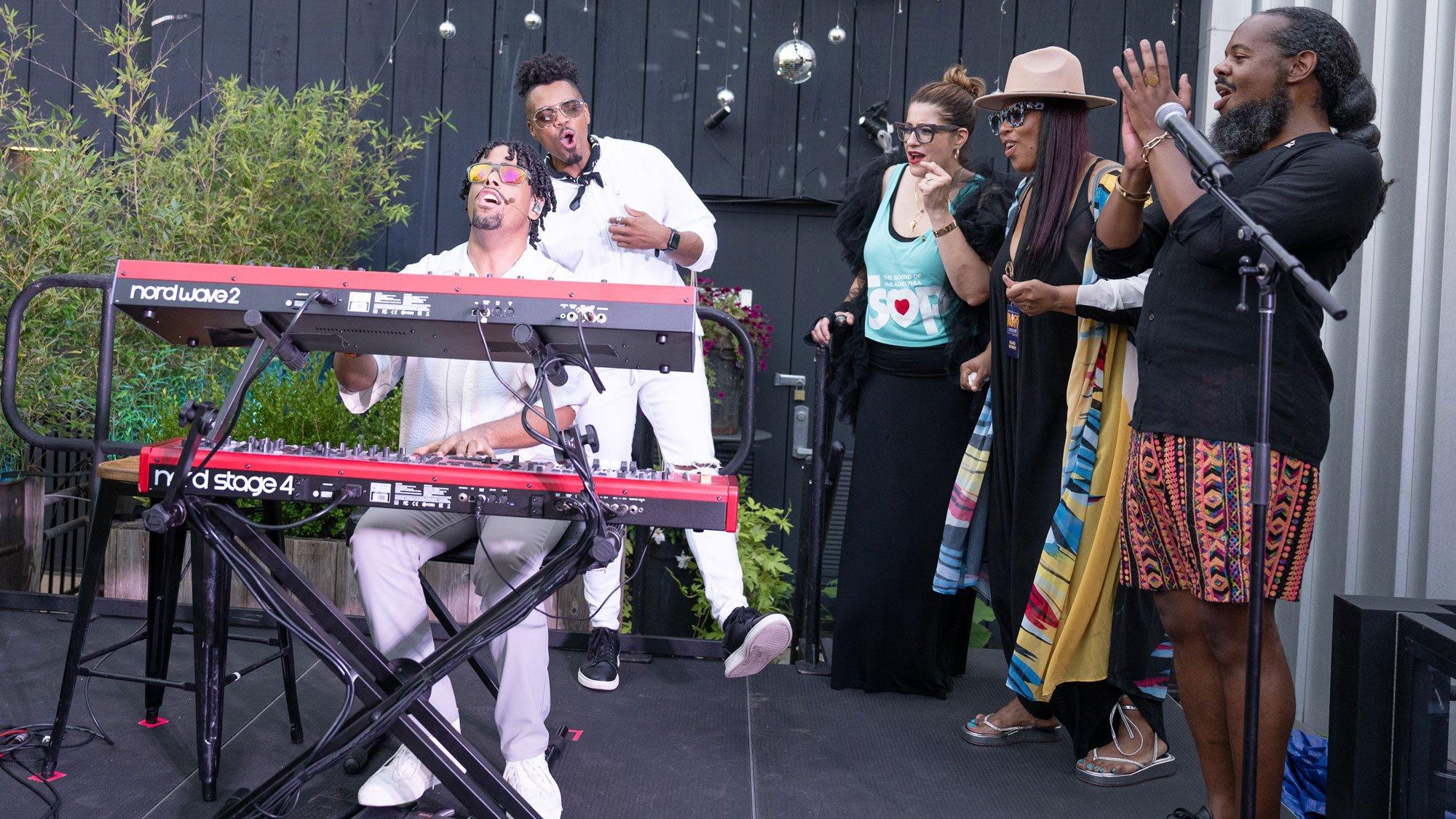
Photo: Lisa Lake
news
How The Recording Academy's RAA+D Network Is Supporting Artists & Creators With Disabilities And Building Accessibility For All
Through RAA+D, its Disability + Accessibility Network, the Recording Academy is building true accessibility for everyone in the music community and championing artists and music professionals with disabilities.
Navigating the multitude of challenges and roadblocks within the music industry can often seem like a herculean feat. Musicians and industry professionals are expected to master the intricacies of creating and performing music while also juggling the economics and business dealings of the industry. These challenges can be even more daunting for creators and industry professionals with disabilities.
As the leading global community of music professionals, the Recording Academy is acutely aware of these unique challenges, and it's dedicated to supporting creators and professionals from all backgrounds and experiences.
That's the vision behind RAA+D (Disability + Accessibility), the Recording Academy's new member resource group aimed at supporting artists, creators and professionals with disabilities and advancing their needs and initiatives. Unveiled during the Recording Academy Philadelphia Chapter's inaugural Block Party during Disability Pride Month last month, RAA+D is dedicated to achieving true accessibility for everyone in the music community and going beyond mere compliance.
Through RAA+D, the Academy is working to ensure that all members can fully engage in the organization's programs by providing elements such as live American Sign Language (ASL) interpreters, accessibility ramps at our shows and events, and closed captioning for our programs.
"In recent years, the Academy has made significant strides to ensure that individuals from all walks of life feel supported and a sense of belonging within the Recording Academy spaces," Ryan Butler, Vice President of Diversity, Equity & Inclusion for the Recording Academy, said in an interview. "Through the implementation of RAA+D, the Academy aims to create a robust support system for the disability community, providing opportunities for networking and celebrating their contributions to the greater music community."
Read More: How The Music Industry Must Work To Close The Accessibility Gap: 4 Eye-Opening Takeaways
RAA+D's initiatives are driven by a commitment to foster an inclusive environment where accessibility and community are priorities. To help accomplish this, the Recording Academy has partnered with RAMPD (Recording Artists and Music Professionals with Disabilities), one of the leading organizations supporting music creatives with disabilities, as a community partner to advance the work of RAA+D on a year-round basis.
RAA+D is part of the Recording Academy's DREAM (Diversity Reimagined by Engaging All Musicmakers) Initiative, an inclusive network of member resource groups spotlighting the contributions and initiatives of creators and professionals from diverse cultural backgrounds.
Spearheaded by the Academy's Diversity, Equity & Inclusion (DEI) team, the DREAM Initiative recently launched multiple resource groups, including Gold Music Alliance, which honors and elevates Pan-Asian members and allies within the GRAMMY organization and the music industry, and Academy Proud, which celebrates and honors LGBTQIA+ Academy members and music industry professionals. Other active groups within the DREAM Initiative include Women in the Mix, launched in 2019, which builds community for all women and increases representation within the Recording Academy and in the music industry; the Black Music Collective, launched in 2020, which is a group of prominent Black music creators and professionals focused on advancing Black music and culture; and GRAMMYs Next Gen, which supports and empowers the next generation of music creators and professionals.
As the Recording Academy continues to establish membership networks that align with our wide-spanning mission and core values, the DREAM Initiative will launch multiple member resource groups spotlighting the diverse music community, including groups celebrating and supporting Latin and Indigenous creators and music professionals.
"As we look to the future, we are thrilled about the transformative potential of RAA+D," Butler reflected. "This initiative reaffirms our commitment to inclusivity and the recognition of the diverse talents within the disability community. We are excited to see the positive impact it will have on our organization and our members."
With additional reporting from John Morrison
Latest News & Exclusive Videos
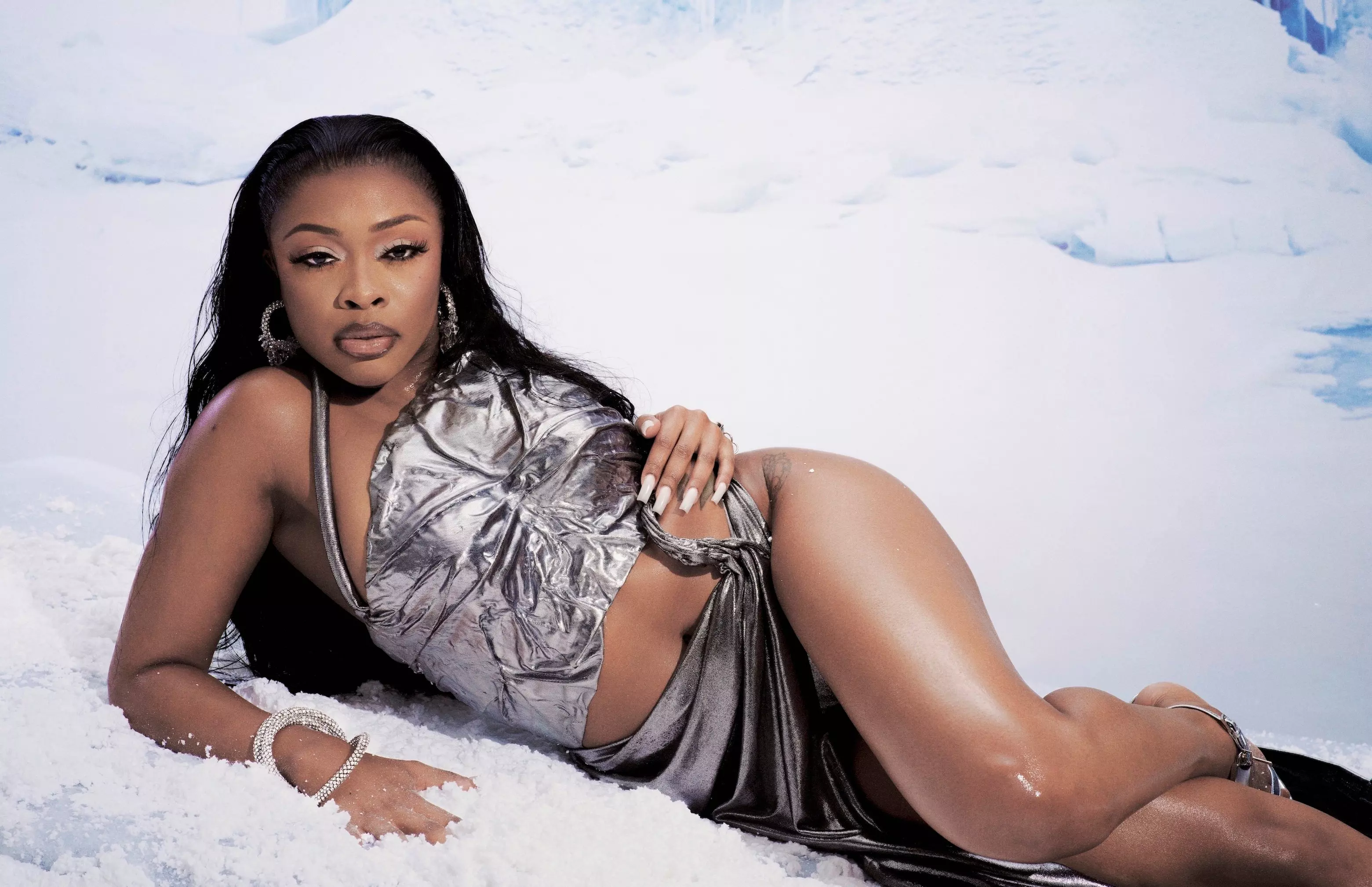
With Her 'Winter's Diary' Return, Tink Is Ready To Rep For "The Girls Going Through It"
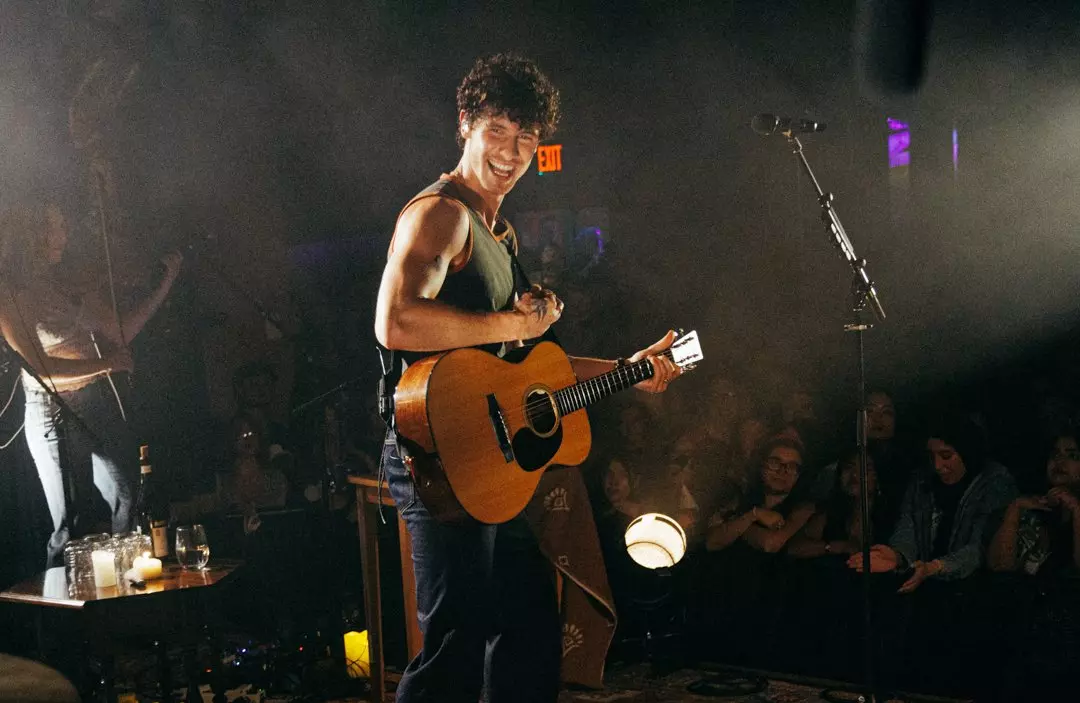
New Music Friday: Listen To New Songs From ATEEZ & G-Eazy, Shawn Mendes, Latto, & More

Watch Alanis Morissette Win At The 1999 GRAMMYs

Dancehall Legend Spice Reflects On 'Mirror 25,' Her Near-Death Experience & Owning Her Own Vision

The Recording Academy Philly Chapter Celebrates 30 Years With An Inaugural Block Party & Fireside Chat With Tierra Whack
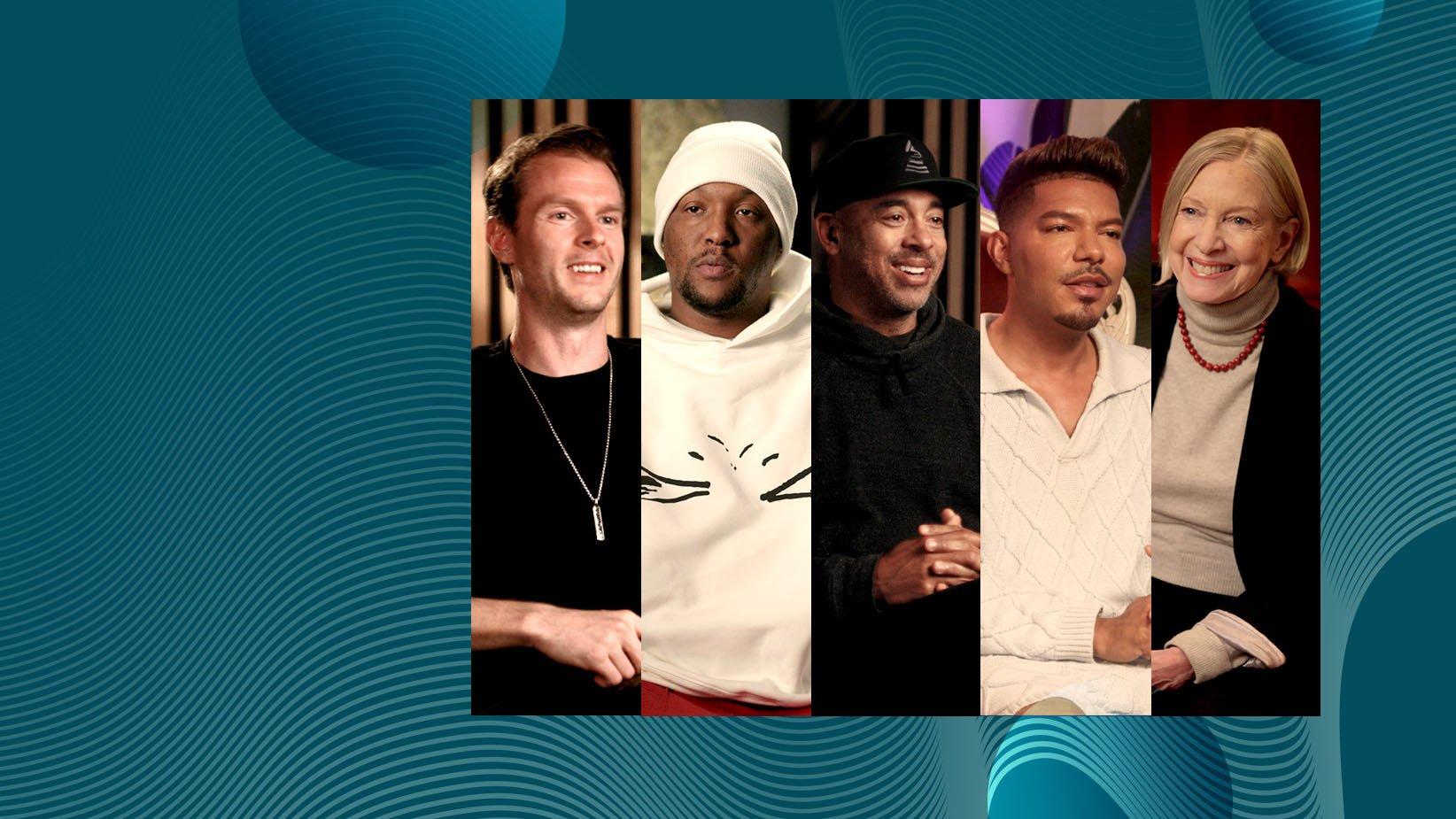
Photos Courtesy of the Recording Academy
news
The New GRAMMY GO Music Production Course Is Now Open: Featuring GRAMMY Winners Hit-Boy, CIRKUT, Judith Sherman & More
Enrollment is now open for GRAMMY GO's new specialization, "Music Production: Crafting Award-Worthy Songs," featuring appearances by GRAMMY winners and nominees. Learn music production and creative strategies from today's industry leaders.
Editor’s Note: Updated to add the Instagram Live video featuring Harvey Mason jr. and Stevie Mackey.
The Recording Academy continues its mission to empower music's next generation with the launch of its second specialization in the GRAMMY GO platform: "Music Production: Crafting Award-Worthy Songs."
This new course, a partnership between the Recording Academy and leading online learning platform Coursera, aims to bolster the technological and audio skills of music producers of all levels. The course, taught by Howard University professor and GRAMMY nominee Carolyn Malachi, features appearances by three-time GRAMMY winner and rap icon Hit-Boy, chart-topping and GRAMMY-winning producer/songwriter CIRKUT, artist and celebrity vocal coach Stevie Mackey, five-time GRAMMY nominee and Recording Academy CEO Harvey Mason jr., and 15-time GRAMMY winner Judith Sherman.
Enrollment for "Music Production: Crafting Award-Worthy Songs" is open now.
Mixing a unique blend of theory and practice, the course teaches music creators of all levels the advanced skills and tools to develop the mindset and confidence of an experienced producer and produce songs of the highest industry standards across all genres. Explore the wide-ranging roles of a music producer, develop critical listening and analysis skills, and master the technical aspects to create music and compositions that cut through the noise. The course's applied learning approach allows learners to sharpen their pre-production skills, utilize Digital Audio Workstations (DAWs) effectively, and produce vocals, instrumentals and samples collaboratively. Through critical listening exercises and discussions, learners will refine their abilities to deliver professional-quality demos.
To celebrate the launch, the Recording Academy hosted an Instagram Live session on Tuesday in which guests Harvey Mason jr. and Stevie Mackey discussed the evolving role of music producers, strategies for working with artists, key elements of top-notch productions, common mixing mistakes, tips for keeping the creative process fresh, and enrollment details for the course.
Building on the success of its first specialization, "Building Your Audience for Music Professionals," GRAMMY GO continues to offer industry-focused education tailored for emerging and established music creators and professionals alike. The innovative platform provides learners with real-time insights from leading music industry figures, ensuring the content remains practical and up to date. GRAMMY GO will also serve as an essential tool in the Recording Academy's global expansion into Africa and the Middle East, empowering music creators through enhanced training, bridging knowledge gaps, and fostering connections within the global music community.
Launched in April in partnership with Coursera, GRAMMY GO is the Recording Academy's first creator-to-creator platform, offering innovative courses tailored for both emerging and established music professionals. The initiative accelerates the Academy's global mission and reinforces its commitment to music education, providing a seamless bridge between all Academy initiatives.
Learn more about GRAMMY GO and the "Music Production: Crafting Award-Worthy Songs" and "Building Your Audience for Music Professionals" specializations.
Watch the Instagram Live session with Harvey Mason jr. and Stevie Mackey in full below:
More Music Education News & Initiatives
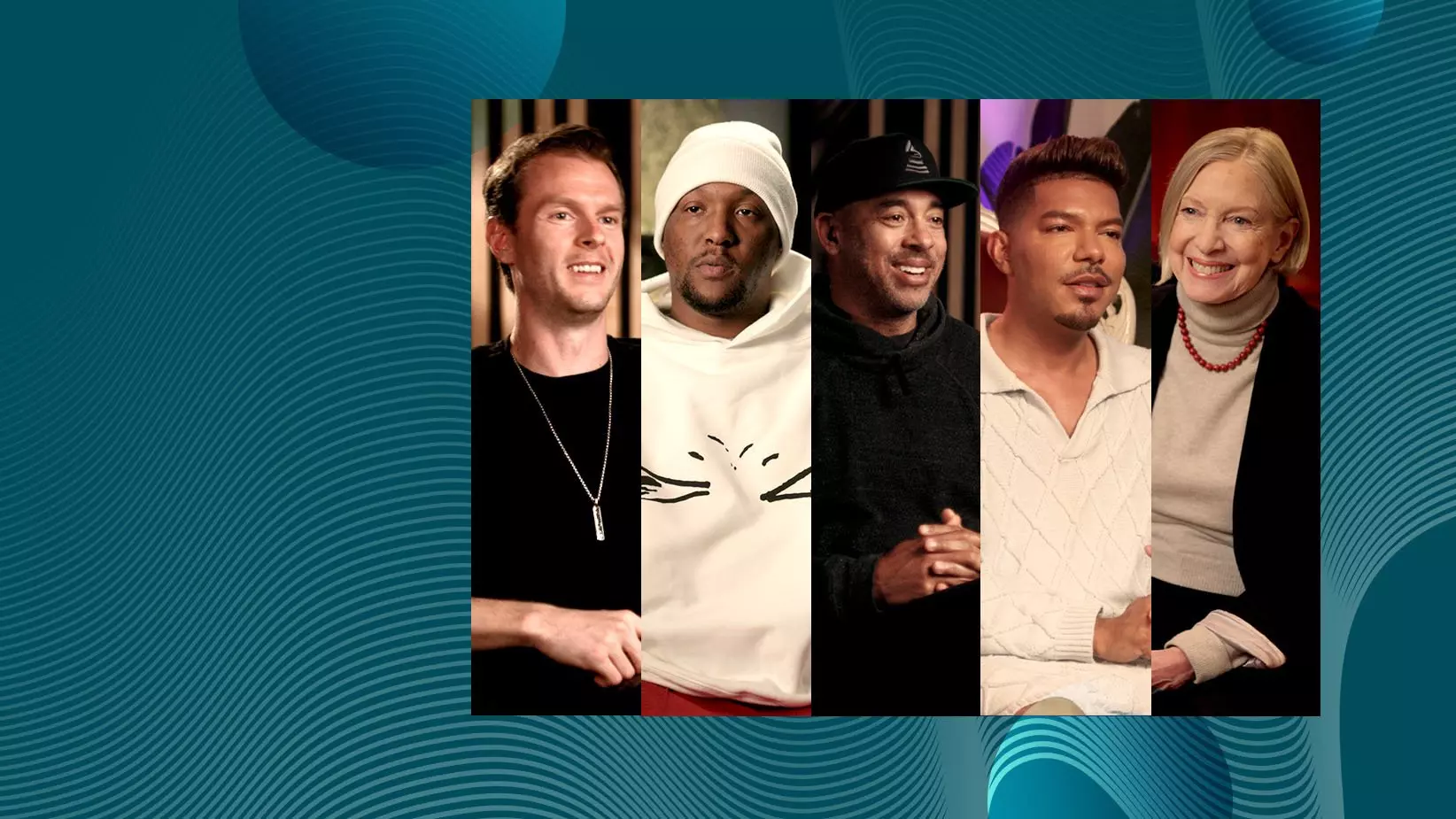
The New GRAMMY GO Music Production Course Is Now Open: Featuring GRAMMY Winners Hit-Boy, CIRKUT, Judith Sherman & More
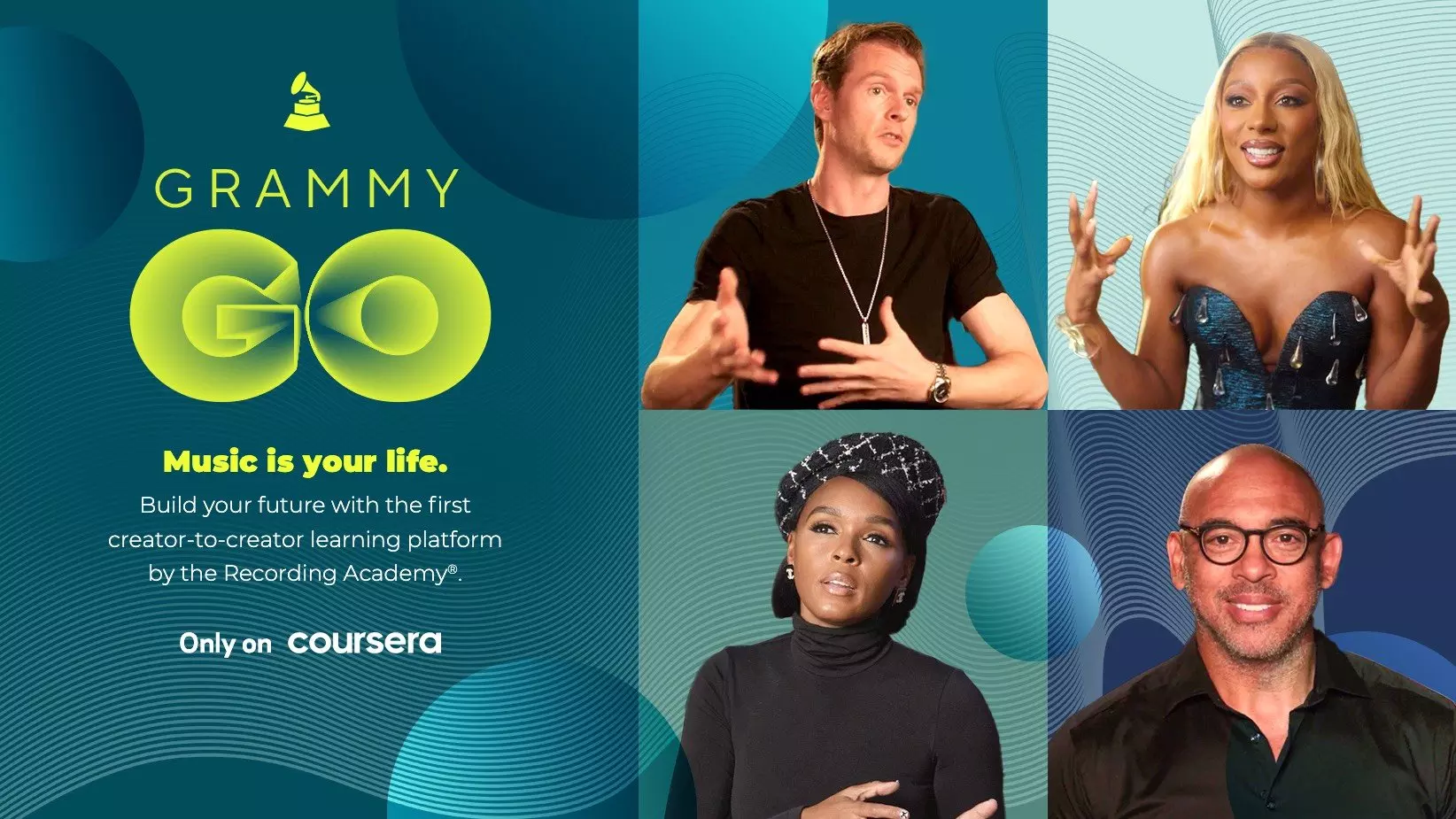
Recording Academy & Coursera Partner To Launch GRAMMY GO Online Learning Initiative

25 Semifinalists Announced For The 2024 Music Educator Award

5 Music Teachers Share The Transformative Power Of Music Education
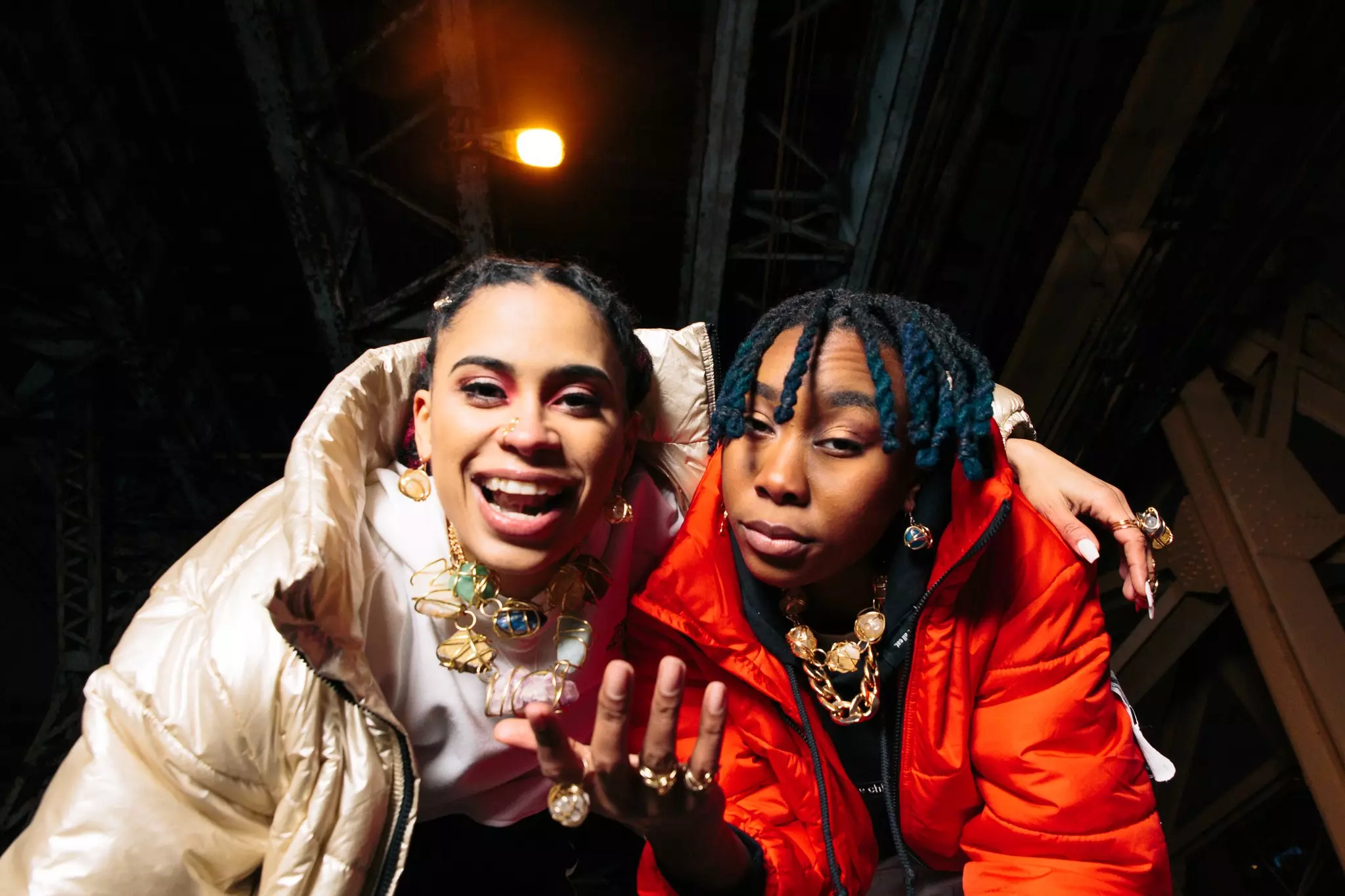
Meet Mother Nature, The Chicago Rap Duo That Teach & Live Self-Expression Through Their Miseducation Of HipHop Youth Workshops
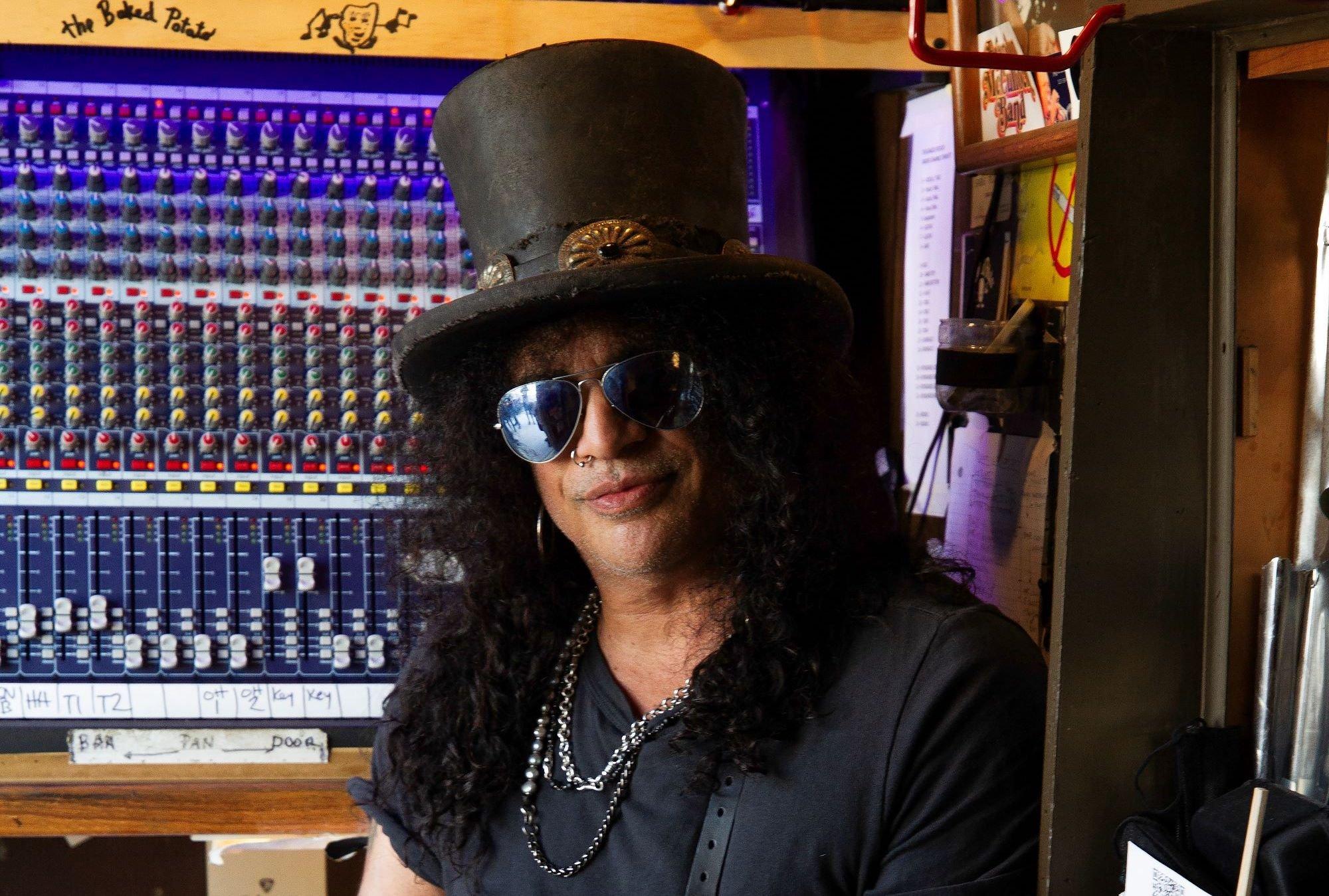
interview
Slash's New Blues Ball: How His Collaborations Album 'Orgy Of The Damned' Came Together
On his new album, 'Orgy Of The Damned,' Slash recruits several friends — from Aerosmith's Steven Tyler to Demi Lovato — to jam on blues classics. The rock legend details how the project was "an accumulation of stuff I've learned over the years."
In the pantheon of rock guitar gods, Slash ranks high on the list of legends. Many fans have passionately discussed his work — but if you ask him how he views his evolution over the last four decades, he doesn't offer a detailed analysis.
"As a person, I live very much in the moment, not too far in the past and not very far in the future either," Slash asserts. "So it's hard for me to really look at everything I'm doing in the bigger scheme of things."
While his latest endeavor — his new studio album, Orgy Of The Damned — may seem different to many who know him as the shredding guitarist in Guns N' Roses, Slash's Snakepit, Velvet Revolver, and his four albums with Myles Kennedy and the Conspirators, it's a prime example of his living-in-the-moment ethos. And, perhaps most importantly to Slash, it goes back to what has always been at the heart of his playing: the blues.
Orgy Of The Damned strips back much of the heavier side of his playing for a 12-track homage to the songs and artists that have long inspired him. And he recruited several of his rock cohorts — the likes of AC/DC's Brian Johnson, Aerosmith's Steven Tyler, Gary Clark Jr., Iggy Pop, Beth Hart, and Dorothy, among others — to jam on vintage blues tunes with him, from "Hoochie Coochie Man" to "Born Under A Bad Sign."
But don't be skeptical of his current venture — there's plenty of fire in these interpretations; they just have a different energy than his harder rocking material. The album also includes one new Slash original, the majestic instrumental "Metal Chestnut," a nice showcase for his tastefully melodic and expressive playing.
The initial seed for the project was planted with the guitarist's late '90s group Slash's Blues Ball, which jammed on genre classics. Those live, spontaneous collaborations appealed to him, so when he had a small open window to get something done recently, he jumped at the chance to finally make a full-on blues album.
Released May 17, Orgy Of The Damned serves as an authentic bridge from his musical roots to his many hard rock endeavors. It also sees a full-circle moment: two Blues Ball bandmates, bassist Johnny Griparic and keyboardist Teddy Andreadis, helped lay down the basic tracks. Further seizing on his blues exploration, Slash will be headlining his own touring blues festival called S.E.R.P.E.N.T. in July and August, with support acts including the Warren Haynes Band, Keb' Mo', ZZ Ward, and Eric Gales.
Part of what has kept Slash's career so intriguing is the diversity he embraces. While many heavy rockers stay in their lane, Slash has always traveled down other roads. And though most of his Orgy Of The Damned guests are more in his world, he's collaborated with the likes of Michael Jackson, Carole King and Ray Charles — further proof that he's one of rock's genre-bending greats.
Below, Slash discusses some of the most memorable collabs from Orgy Of The Damned, as well as from his wide-spanning career.
I was just listening to "Living For The City," which is my favorite track on the album.
Wow, that's awesome. That was the track that I knew was going to be the most left of center for the average person, but that was my favorite song when [Stevie Wonder's 1973 album] Innervisions came out when I was, like, 9 years old. I loved that song. This record's origins go back to a blues band that I put together back in the '90s.
Slash's Blues Ball.
Right. We used to play "Superstition," that Stevie Wonder song. I did not want to record that [for Orgy Of The Damned], but I still wanted to do a Stevie Wonder song. So it gave me the opportunity to do "Living For The City," which is probably the most complicated of all the songs to learn. I thought we did a pretty good job, and Tash [Neal] sang it great. I'm glad you dig it because you're probably the first person that's actually singled that song out.
With the Blues Ball, you performed Hoyt Axton's "The Pusher" and Robert Johnson's "Crossroads," and they surface here. Isn't it amazing it took this long to record a collection like this?
[Blues Ball] was a fun thrown-together thing that we did when I [was in, I] guess you call it, a transitional period. I'd left Guns N' Roses [in 1996], and it was right before I put together a second incarnation of Snakepit.
I'd been doing a lot of jamming with a lot of blues guys. I'd known Teddy [Andreadis] for a while and been jamming with him at The Baked Potato for years prior to this. So during this period, I got together with Ted and Johnny [Griparic], and we started with this Blues Ball thing. We started touring around the country with it, and then even made it to Europe. It was just fun.
Then Snakepit happened, and then Velvet Revolver. These were more or less serious bands that I was involved in. Blues Ball was really just for the fun of it, so it didn't really take precedence. But all these years later, I was on tour with Guns N' Roses, and we had a three-week break or whatever it was. I thought, I want to make that f—ing record now.
It had been stewing in the back of my mind subconsciously. So I called Teddy and Johnny, and I said, Hey, let's go in the studio and just put together a set and go and record it. We got an old set list from 1998, picked some songs from an app, picked some other songs that I've always wanted to do that I haven't gotten a chance to do.
Then I had the idea of getting Tash Neal involved, because this guy is just an amazing singer/guitar player that I had worked with in a blues thing a couple years prior to that. So we had the nucleus of this band.
Then I thought, Let's bring in a bunch of guest singers to do this. I don't want to try to do a traditional blues record, because I think that's going to just sound corny. So I definitely wanted this to be more eclectic than that, and more of, like, Slash's take on these certain songs, as opposed to it being, like, "blues." It was very off-the-cuff and very loose.
It's refreshing to hear Brian Johnson singing in his lower register on "Killing Floor" like he did in the '70s with Geordie, before he got into AC/DC. Were you expecting him to sound like that?
You know, I didn't know what he was gonna sing it like. He was so enthusiastic about doing a Howlin' Wolf cover.
I think he was one of the first calls that I made, and it was really encouraging the way that he reacted to the idea of the song. So I went to a studio in Florida. We'd already recorded all the music, and he just fell into it in that register.
I think he was more or less trying to keep it in the same feel and in the same sort of tone as the original, which was great. I always say this — because it happened for like two seconds, he sang a bit in the upper register — but it definitely sounded like AC/DC doing a cover of Howlin' Wolf. We're not AC/DC, but he felt more comfortable doing it in the register that Howlin' Wolf did. I just thought it sounded really great.
You chose to have Demi Lovato sing "Papa Was A Rolling Stone." Why did you pick her?
We used to do "Papa Was A Rolling Stone" back in Snakepit, actually, and Johnny played bass. We had this guy named Rod Jackson, who was the singer, and he was incredible. He did a great f—ing interpretation of the Temptations singing it.
When it came to doing it for this record, I wanted to have something different, and the idea of having a young girl's voice telling the story of talking to her mom to find out about her infamous late father, just made sense to me. And Demi was the first person that I thought of. She's got such a great, soulful voice, but it's also got a certain kind of youth to it.
When I told her about it, she reacted like Brian did: "Wow, I would love to do that." There's some deeper meaning about the song to her and her personal life or her experience. We went to the studio, and she just belted it out. It was a lot of fun to do it with her, with that kind of zeal.
You collaborate with Chris Stapleton on Fleetwood Mac's "Oh Well" by Peter Green. I'm assuming the original version of that song inspired "Double Talkin' Jive" by GN'R?
It did not, but now that you mention it, because of the classical interlude thing at the end... Is that what you're talking about? I never thought about it.
I mean the overall vibe of the song.
"Oh Well" was a song that I didn't hear until I was about 12 years old. It was on KMET, a local radio station in LA. I didn't even know there was a Fleetwood Mac before Stevie Nicks and Lindsey Buckingham. I always loved that song, and I think it probably had a big influence on me without me even really realizing it. So no, it didn't have a direct influence on "Double Talkin' Jive," but I get it now that you bring it up.
Was there something new that you learned in making this album? Were your collaborators surprised by their own performances?
I think Gary Clark is just this really f—ing wonderful guitar player. When I got "Crossroads," the idea originally was "Crossroads Blues," which is the original Robert Johnson version. And I called Gary and said, "Would you want to play with me on this thing?"
He and I only just met, so I didn't know what his response was going to be. But apparently, he was a big Guns N' Roses fan — I get the idea, anyway. We changed it to the Cream version just because I needed to have something that was a little bit more upbeat. So when we got together and played, we solo-ed it off each other.
When I listen back to it, his playing is just so f—ing smooth, natural, and tasty. There was a lot of that going on throughout the making of the whole record — acclimating to the song and to the feel of it, just in the moment.
I think that's all an accumulation of stuff that I've learned over the years. The record probably would be way different if I did it 20 years ago, so I don't know what that evolution is. But it does exist. The growth thing — God help us if you don't have it.
You've collaborated with a lot of people over the years — Michael Jackson, Carole King, Lemmy, B.B. King, Fergie. Were there any particular moments that were daunting or really challenging? And was there any collaboration that produced something you didn't expect?
All those are a great example of the growth thing, because that's how you really grow as a musician. Learning how to adapt to playing with other people, and playing with people who are better than you — that really helps you blossom as a player.
Playing with Carole King [in 1993] was a really educational experience because she taught me a lot about something that I thought that I did naturally, but she helped me to fine tune it, which was soloing within the context of the song. [It was] really just a couple of words that she said to me during this take that stuck with me. I can't remember exactly what they were, but it was something having to do with making room for the vocal. It was really in passing, but it was important knowledge.
The session that really was the hardest one that I ever did was [when] I was working with Ray Charles before he passed away. I played on his "God Bless America [Again]" record [on 2002's Ray Charles Sings for America], just doing my thing. It was no big deal. But he asked me to play some standards for the biopic on him [2004's Ray], and he thought that I could just sit in with his band playing all these Ray Charles standards.
That was something that they gave me the chord charts for, and it was over my head. It was all these chord changes. I wasn't familiar with the music, and most of it was either a jazz or bebop kind of a thing, and it wasn't my natural feel.
I remember taking the chord charts home, those kinds you get in a f—ing songbook. They're all kinds of versions of chords that wouldn't be the version that you would play.
That was one of those really tough sessions that I really learned when I got in over my head with something. But a lot of the other ones I fall into more naturally because I have a feel for it.
That's how those marriages happen in the first place — you have this common interest of a song, so you just feel comfortable doing it because it's in your wheelhouse, even though it's a different kind of music than what everybody's familiar with you doing. You find that you can play and be yourself in a lot of different styles. Some are a little bit challenging, but it's fun.
Are there any people you'd like to collaborate with? Or any styles of music you'd like to explore?
When you say styles, I don't really have a wish list for that. Things just happen. I was just working with this composer, Bear McCreary. We did a song on this epic record that's basically a soundtrack for this whole graphic novel thing, and the compositions are very intense. He's very particular about feel, and about the way each one of these parts has to be played, and so on. That was a little bit challenging. We're going to go do it live at some point coming up.
There's people that I would love to play with, but it's really not like that. It's just whatever opportunities present themselves. It's not like there's a lot of forethought as to who you get to play with, or seeking people out. Except for when you're doing a record where you have people come in and sing on your record, and you have to call them up and beg and plead — "Will you come and do this?"
But I always say Stevie Wonder. I think everybody would like to play with Stevie Wonder at some point.
Incubus On Revisiting Morning View & Finding Rejuvenation By Looking To The Past
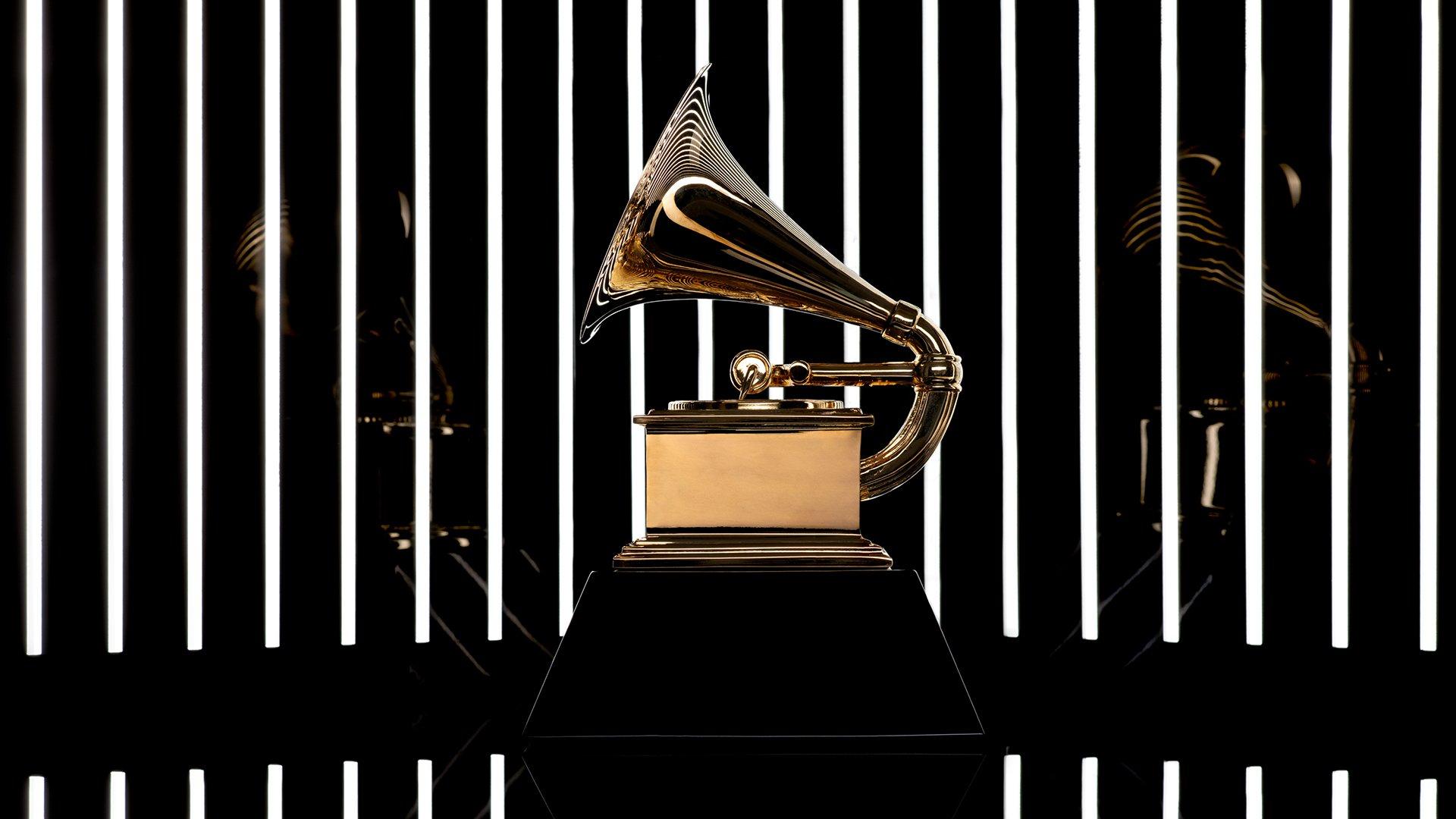
Photo: Jathan Campbell
list
How Much Is A GRAMMY Worth? 7 Facts To Know About The GRAMMY Award Trophy
Here are seven facts to know about the actual cost and worth of a GRAMMY trophy, presented once a year by the Recording Academy at the GRAMMY Awards.
Since 1959, the GRAMMY Award has been music’s most coveted honor. Each year at the annual GRAMMY Awards, GRAMMY-winning and -nominated artists are recognized for their musical excellence by their peers. Their lives are forever changed — so are their career trajectories. And when you have questions about the GRAMMYs, we have answers.
Here are seven facts to know about the value of the GRAMMY trophy.
How Much Does A GRAMMY Trophy Cost To Make?
The cost to produce a GRAMMY Award trophy, including labor and materials, is nearly $800. Bob Graves, who cast the original GRAMMY mold inside his garage in 1958, passed on his legacy to John Billings, his neighbor, in 1983. Billings, also known as "The GRAMMY Man," designed the current model in use, which debuted in 1991.
How Long Does It Take To Make A GRAMMY Trophy?
Billings and his crew work on making GRAMMY trophies throughout the year. Each GRAMMY is handmade, and each GRAMMY Award trophy takes 15 hours to produce.
Where Are The GRAMMY Trophies Made?
While Los Angeles is the headquarters of the Recording Academy and the GRAMMYs, and regularly the home of the annual GRAMMY Awards, GRAMMY trophies are produced at Billings Artworks in Ridgway, Colorado, about 800 miles away from L.A.
Is The GRAMMY Award Made Of Real Gold?
GRAMMY Awards are made of a trademarked alloy called "Grammium" — a secret zinc alloy — and are plated with 24-karat gold.
How Many GRAMMY Trophies Are Made Per Year?
Approximately 600-800 GRAMMY Award trophies are produced per year. This includes both GRAMMY Awards and Latin GRAMMY Awards for the two Academies; the number of GRAMMYs manufactured each year always depends on the number of winners and Categories we award across both award shows.
Fun fact: The two GRAMMY trophies have different-colored bases. The GRAMMY Award has a black base, while the Latin GRAMMY Award has a burgundy base.
Photos: Gabriel Bouys/AFP via Getty Images; Frederick M. Brown/Getty Images
How Much Does A GRAMMY Weigh?
The GRAMMY trophy weighs approximately 5 pounds. The trophy's height is 9-and-a-half inches. The trophy's width is nearly 6 inches by 6 inches.
What Is The True Value Of A GRAMMY?
Winning a GRAMMY, and even just being nominated for a GRAMMY, has an immeasurable positive impact on the nominated and winning artists. It opens up new career avenues, builds global awareness of artists, and ultimately solidifies a creator’s place in history. Since the GRAMMY Award is the only peer-voted award in music, this means artists are recognized, awarded and celebrated by those in their fields and industries, ultimately making the value of a GRAMMY truly priceless and immeasurable.
In an interview featured in the 2024 GRAMMYs program book, two-time GRAMMY winner Lauren Daigle spoke of the value and impact of a GRAMMY Award. "Time has passed since I got my [first] GRAMMYs, but the rooms that I am now able to sit in, with some of the most incredible writers, producers and performers on the planet, is truly the greatest gift of all."
"Once you have that credential, it's a different certification. It definitely holds weight," two-time GRAMMY winner Tariq "Black Thought" Trotter of the Roots added. "It's a huge stamp as far as branding, businesswise, achievement-wise and in every regard. What the GRAMMY means to people, fans and artists is ever-evolving."
As Billboard explains, artists will often see significant boosts in album sales and streaming numbers after winning a GRAMMY or performing on the GRAMMY stage. This is known as the "GRAMMY Effect," an industry phenomenon in which a GRAMMY accolade directly influences the music biz and the wider popular culture.
For new artists in particular, the "GRAMMY Effect" has immensely helped rising creators reach new professional heights. Samara Joy, who won the GRAMMY for Best New Artist at the 2023 GRAMMYs, saw a 989% boost in sales and a 670% increase in on-demand streams for her album Linger Awhile, which won the GRAMMY for Best Jazz Vocal Album that same night. H.E.R., a former Best New Artist nominee, saw a massive 6,771% increase in song sales for her hit “I Can’t Breathe” on the day it won the GRAMMY for Song Of The Year at the 2021 GRAMMYs, compared to the day before, Rolling Stone reports.
Throughout the decades, past Best New Artist winners have continued to dominate the music industry and charts since taking home the GRAMMY gold — and continue to do so to this day. Recently, Best New Artist winners dominated the music industry and charts in 2023: Billie Eilish (2020 winner) sold 2 million equivalent album units, Olivia Rodrigo (2022 winner) sold 2.1 million equivalent album units, and Adele (2009 winner) sold 1.3 million equivalent album units. Elsewhere, past Best New Artist winners have gone on to star in major Hollywood blockbusters (Dua Lipa); headline arena tours and sign major brand deals (Megan Thee Stallion); become LGBTIA+ icons (Sam Smith); and reach multiplatinum status (John Legend).
Most recently, several winners, nominees and performers at the 2024 GRAMMYs saw significant bumps in U.S. streams and sales: Tracy Chapman's classic, GRAMMY-winning single "Fast Car," which she performed alongside Luke Combs, returned to the Billboard Hot 100 chart for the first time since 1988, when the song was originally released, according to Billboard. Fellow icon Joni Mitchell saw her ‘60s classic “Both Sides, Now,” hit the top 10 on the Digital Song Sales chart, Billboard reports.
In addition to financial gains, artists also experience significant professional wins as a result of their GRAMMY accolades. For instance, after she won the GRAMMY for Best Reggae Album for Rapture at the 2020 GRAMMYs, Koffee signed a U.S. record deal; after his first GRAMMYs in 2014, Kendrick Lamar saw a 349% increase in his Instagram following, Billboard reports.
Visit our interactive GRAMMY Awards Journey page to learn more about the GRAMMY Awards and the voting process behind the annual ceremony.
